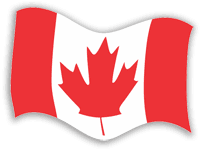
#3 The Governor General
by Norman Hillmer
| In December 2008, at the height of the most explosive political
crisis in Canada since the Quebec referendum of the mid-1990s,
Governor General Michaëlle Jean had to decide whether the
Conservative government of Stephen Harper would live or die. For
a moment, the Governor General stepped to the centre of Canadian
political life. The crisis hit without warning. With Christmas only days away, the national capital of Ottawa was fast asleep. Prime Minister Harper had won the 2008 federal election a month before. He did not possess a majority of seats in the House of Commons, but he had substantially more backing than any other party leader. He seemed likely to govern with ease. Then Harper miscalculated. He appeared indifferent to the deep recession that was rocking the Canadian and world economy, and he combined that indifference with an announcement that his government would end the public financing of political parties, a direct attack on his rivals in Parliament. The Liberals and the New Democratic Party declared that they would combine with the Bloc Québécois to defeat Harper in the House of Commons and replace him with a Liberal-NDP coalition that could govern with the support of the Bloc. Taken together, the Liberals of Stéphane Dion, Jack Layton’s NDP, and the Bloc under Gilles Duceppe could deploy 163 Commons seats to Harper’s 143. Facing disaster in the House of Commons, Harper went to the Governor General to request that she prorogue Parliament, a way of saying that it would take a recess and meet again in several weeks time. That would give the Prime Minister the chance to find a strategy to save himself. Governor General Jean accepted Harper’s advice, and he was able to survive when Parliament met again in January 2009. The prime minister concocted an economic stimulus package that won the support of the House of Commons, and the coalition dissolved as quickly as it had been created. The Governor General could have said no. She might have sent the prime minister back to face the House of Commons and certain defeat. That would probably have brought Harper back to the Governor General with a request for another election. She could have refused that appeal too, and called instead on the coalition, led by Stéphane Dion, to form a government. Governors General do not ordinarily go against the advice of a prime minister, but they have the power to do so if the stability or integrity of the democratic process is in question. As one expert, Frank MacKinnon, puts it, the Governor General’s responsibility is to be like a fire extinguisher in a time of emergency. Fire extinguishers are seldom used, but that does not make them useless. At the birth of the country in 1867, its founders created Canada as a constitutional monarchy. The new country would maintain the link to Britain’s Queen Victoria, and a Governor General would represent her in Canada. The first prime minister, Sir John A. Macdonald, wanted the Governor General to be “looked up to by the whole people as the head and front of the nation.” American presidents were both the head of state and the head of government, so that when the president got in trouble the United States itself was in trouble. Governors General were to stand above partisan politics. For a long time, the Governors Generals were British aristocrats. In 1952, recognizing that Canada was by now fully independent from Britain, Prime Minister Louis St. Laurent chose Vincent Massey to be the first Canadian to hold the office. Jeanne Sauvé became the first woman Governor General in 1984. Adrienne Clarkson, appointed Governor General in 1999, and Michaëlle Jean, her successor, originally came to this country of immigrants as immigrant children. Most Canadians, when they think of the Governor General at all, associate the office with speech-making (governor generalities, people joke), ribbon-cutting or tree-planting to mark important occasions, the greeting of foreign visitors, and presiding over grand events such as the opening of Parliament. But the Governor General’s responsibilities go beyond the public and the ceremonial. She signs all the bills that Parliament passes, and they do not become law until she has done so. The Governor General authorizes the sending of diplomats to foreign countries, dispenses honours such as the Order of Canada, and has the title of commander-in-chief of the Canadian military. She does not control the Canadian Armed Forces, but she is a regular presence in the military life of Canada. Governors General, presiding over the nation’s business in the name of the people, are the symbols of Canadian democracy, but they are also its protector. As the constitutional crisis of 2008 demonstrated, the Governor General is an essential part of how Canada is governed. Norman Hillmer is Professor of History and International Affairs at Carleton University. The best short accounts of the Governor General’s role and responsibilities are Jacques Monet, The Canadian Crown (Toronto: Clarke, Irwin, 1979) and Frank MacKinnon, The Crown in Canada (Calgary: McClelland and Stewart West, 1976). Next Instalment: The House of Commons The Canadian Experience is a 52-week history series designed to tell the story of our country to all Canadians. Sponsored by Multimedia Nova Corporation and Diversity Media Services/Lingua Ads partners, the series features articles by our country’s foremost historians on a wide range of topics. Past articles and author bios are available at http://www.cdnexperience.ca. The Canadian Experience is copyright © 2010-2011 Multimedia Nova Corporation. |
List of published "Canadian Experience" articles |
The Canadian Experience communicates to us
about the many facets of Canada, the people, the Charter, brings us
reality and creates understanding.
Copyright ©2010 Echoworld Communications. All rights
reserved

